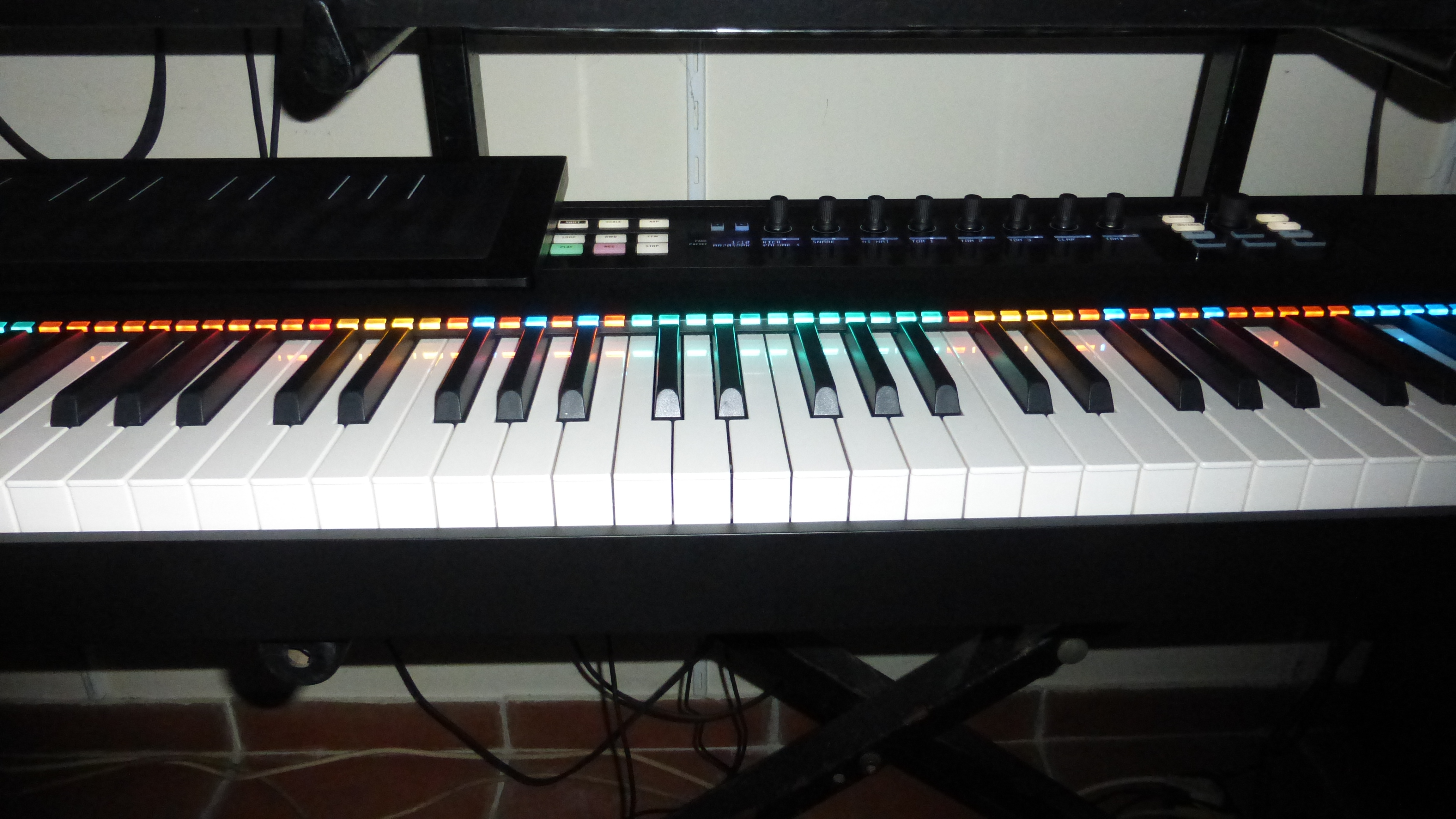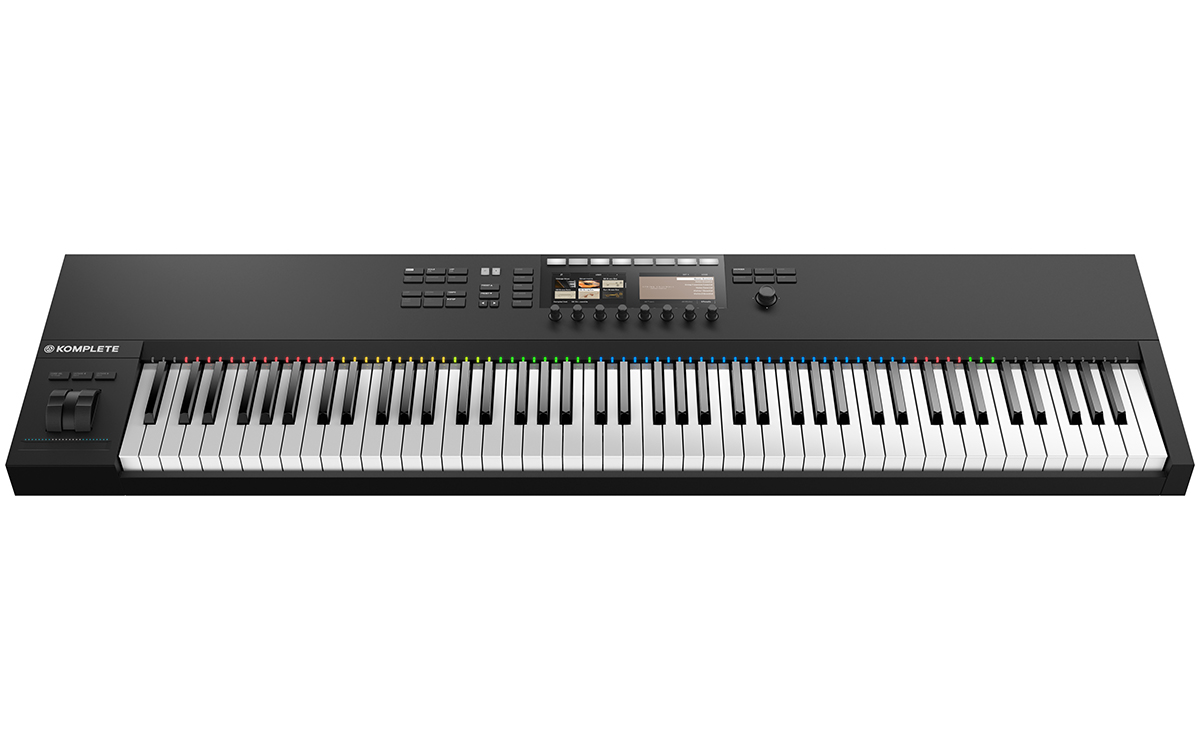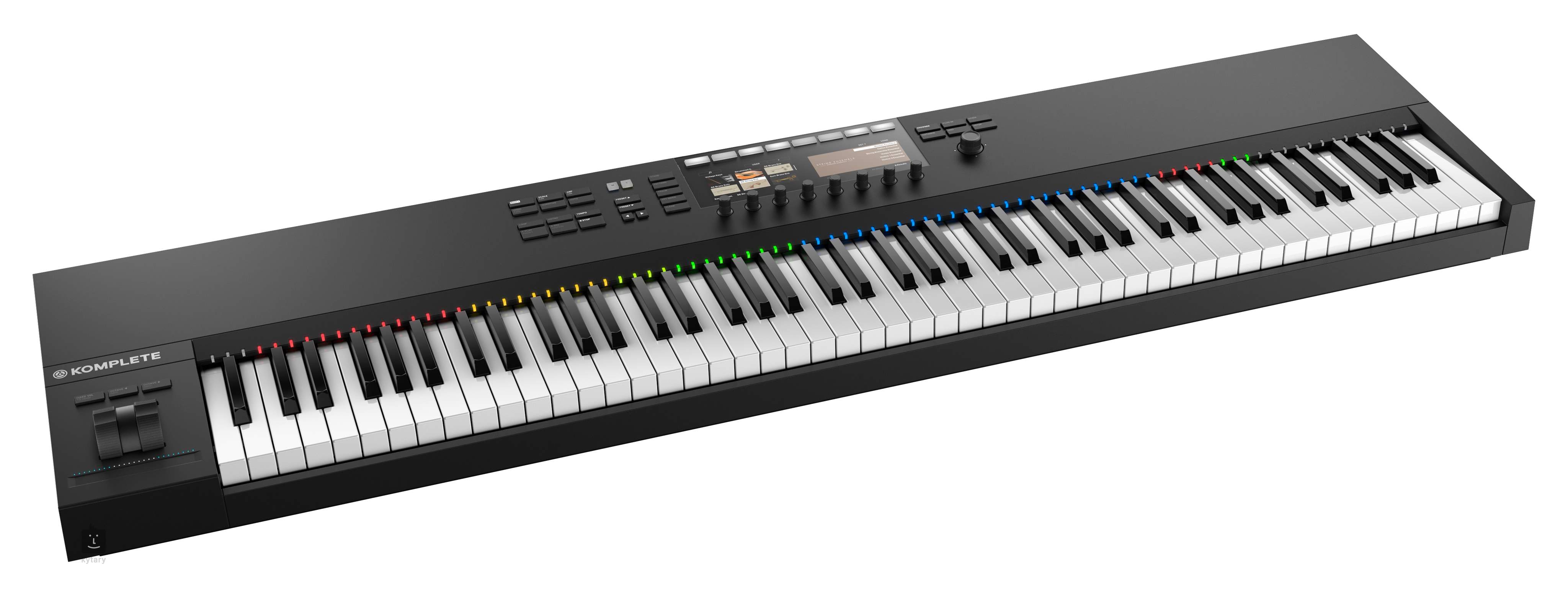

The Touch Strip concept hasn't been entirely abandoned, though - one (freely assignable) horizontal strip is positioned below the wheels.

Moog got it right all those years ago, and I for one prefer wheels for those tasks to any other device. The next significant change - a distinct improvement as far as some are concerned - is the replacement of the pitch and modulation Touch Strips with traditional pitch and mod wheels. Hence the first major change on the MkII: two HD colour screens (more on which later) replacing the MkI's text-based LEDs. The MkI succeeded in this to a point, but still required frequent referral to the screen in order to select which instrument to load into the KK software, and to see that instrument's list of preset names. The principal objective of the KK controllers is to minimise the need for the mouse and computer screen. The 25-, 49- and 61-note synth-action models have been around for some months now the review specimen in front of me is the newest 88-note weighted keyboard version.

This review focuses on the new features of the updated MkII S series. The KK software has undergone various enhancements since then, but the principles remain the same. For more details on NKS and the KK software, check out Simon Sherbourne's January 2015 review of the S49.

In order for third-party VST instruments to take full advantage of the KK paradigm, they must be NKS compatible the growing number of developers adopting this standard is indicative of how thoroughly NI have infiltrated the market and mindset of musicians and developers the world over. The innovative lightguide - LEDs embedded above each key - provide colour-coded information on playable key ranges, scales and keyswitch positions. Whilst control of virtual instruments from hardware knobs and buttons isn't new per se, the KK hardware/software combination takes this much further, providing visual feedback of key parameters on the keyboard itself and using eight rotary encoders for hands-on control of those parameters. The NKS (Native Kontrol Standard) protocol is at the core of the Komplete Kontrol concept, whereby the keyboards communicate bi-directionally with instruments via NI's Komplete Kontrol (henceforth KK) software application. Native Instruments' Komplete Kontrol series of keyboard controllers has been around for nearly five years now, having proven very popular - notably amongst studio musicians who work with NI's Komplete series of virtual instruments. The S88 MkII offers a high-quality weighted keyboard and even tighter computer integration.


 0 kommentar(er)
0 kommentar(er)
